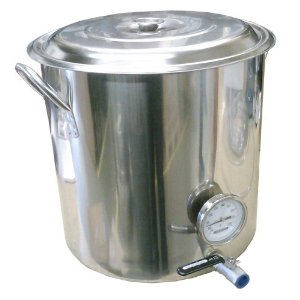electrotype
Active Member
I use my bath full of ice to cold the wort.
For my first brewing, I put the kettle in the bath. But there is a thermometer on the kettle and I don't think it likes to go under water that much!
So I'm thinking about transfering the wort to the primary fermenter as soon as the boil is done, put the lid on the fermenter and put it in the bath, instead of the kettle.
But most of the time, in videos and tutorials, they chill the wort in the kettle itself. Do you see any problem with chilling the wort in the primary fermenter (bucket) instead of in the kettle?
For my first brewing, I put the kettle in the bath. But there is a thermometer on the kettle and I don't think it likes to go under water that much!
So I'm thinking about transfering the wort to the primary fermenter as soon as the boil is done, put the lid on the fermenter and put it in the bath, instead of the kettle.
But most of the time, in videos and tutorials, they chill the wort in the kettle itself. Do you see any problem with chilling the wort in the primary fermenter (bucket) instead of in the kettle?


